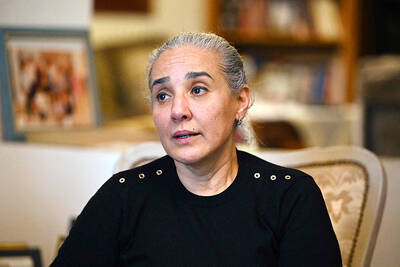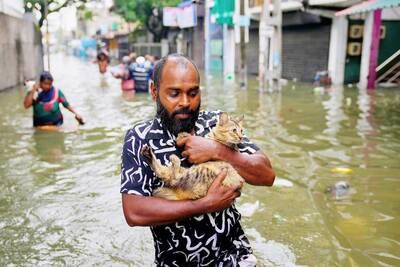The bird flu virus is "firmly entrenched" in Asia and a pandemic among humans remains possible, a WHO specialist warned yesterday.
While Asian countries are more prepared to react to any outbreaks than before and have vaccine stockpiles, deaths and infections have continued, said Takeshi Kasai, the WHO's regional adviser in communicable disease surveillance and response unit.
"The virus has been firmly entrenched in this region, I'm afraid," Kasai told reporters during an exercise to test the Philippines' preparations against the disease.
"The virus itself keeps changing, so the risk of pandemic persists," he said.
Experts fear the virus, which is usually spread directly from birds to humans, could mutate into a form easily transmissible between people, sparking a deadly global pandemic.
Three people have died in China this year of bird flu while a boy and his father were admitted this week to a hospital in Indonesia on suspicion of having the disease.
Since the first human cases were reported in 2003, at least 200 people have died from the H5N1 virus around the world, the WHO said.
Brunei, Singapore and the Philippines remain the only countries in the region where the flu, either in birds or humans, has not been detected.
Kasai praised China for being more transparent in reporting suspected cases.
"I think China now is very open and has been positively sharing information, including lab results," he said.
China has been highly criticized in the past for withholding information relating to the spread of SARS in 2003.

Tunisian President Kais Saied yesterday condemned a European Parliament resolution on human rights calling for the release of his critics as “blatant interference.” The EU Parliament resolution, voted by an overwhelming majority the day before, called for the release of lawyer Sonia Dahmani, a popular critic of Saied, who was freed from prison on Thursday, but remained under judicial supervision. “The European Parliament [resolution] is a blatant interference in our affairs,” Saied said. “They can learn lessons from us on rights and freedoms.” Saied’s condemnation also came two days after he summoned the EU’s ambassador for “failing to respect diplomatic rules.” He also

Tropical Storm Koto killed three people and left another missing as it approached Vietnam, authorities said yesterday, as strong winds and high seas buffeted vessels off the country’s flood-hit central coast. Heavy rains have lashed Vietnam’s middle belt in recent weeks, flooding historic sites and popular holiday destinations, and causing hundreds of millions of dollars in damage. Authorities ordered boats to shore and diverted dozens of flights as Koto whipped up huge waves and dangerous winds, state media reported. Two vessels sank in the rough seas, a fishing boat in Khanh Hoa province and a smaller raft in Lam Dong, according to the

Sri Lanka made an appeal for international assistance yesterday as the death toll from heavy rains and floods triggered by Cyclone Ditwah rose to 123, with another 130 reported missing. The extreme weather system has destroyed nearly 15,000 homes, sending almost 44,000 people to state-run temporary shelters, the Sri Lankan Disaster Management Centre (DMC) said. DMC Director-General Sampath Kotuwegoda said relief operations had been strengthened with the deployment of thousands of troops from the country’s army, navy and air force. “We have 123 confirmed dead and another 130 missing,” Kotuwegoda told reporters in Colombo. Cyclone Ditwah was moving away from the island yesterday and

‘HEART IS ACHING’: Lee appeared to baffle many when he said he had never heard of six South Koreans being held in North Korea, drawing criticism from the families South Korean President Lee Jae-myung yesterday said he was weighing a possible apology to North Korea over suspicions that his ousted conservative predecessor intentionally sought to raise military tensions between the war-divided rivals in the buildup to his brief martial law declaration in December last year. Speaking to reporters on the first anniversary of imprisoned former South Korean president Yoon Suk-yeol’s ill-fated power grab, Lee — a liberal who won a snap presidential election following Yoon’s removal from office in April — stressed his desire to repair ties with Pyongyang. A special prosecutor last month indicted Yoon and two of his top